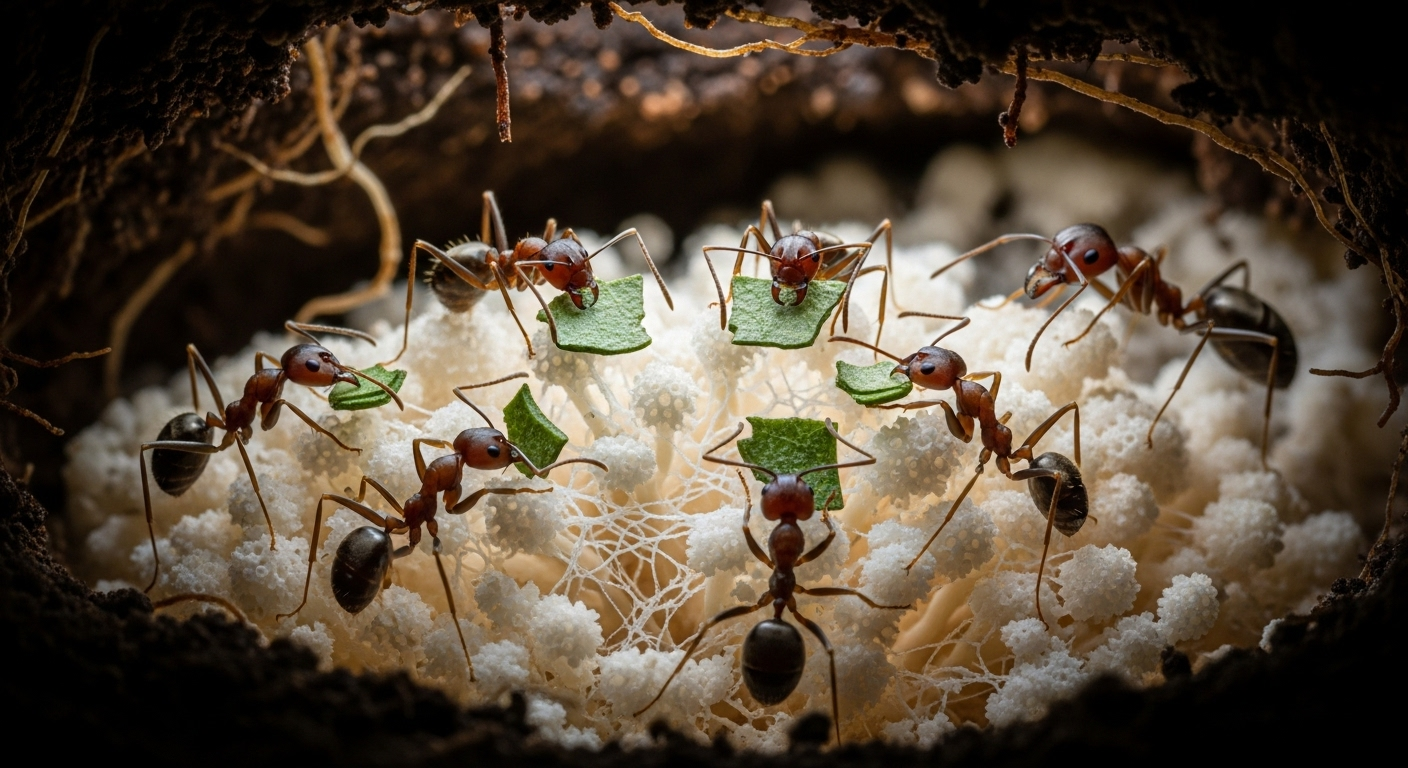The Hidden World of Ant Agriculture
Delve into the fascinating realm of ant agriculture, where tiny farmers cultivate fungi, tend to aphid herds, and manage complex underground ecosystems. This article explores the intricate relationships between ants and their living crops, revealing surprising parallels to human agricultural practices and offering insights into nature's ingenious solutions for sustainable food production.

The Fungus-Growing Ants of the Americas
In the tropical and subtropical regions of the Americas, leaf-cutter ants have perfected a remarkable agricultural system. These ants, belonging to the genera Atta and Acromyrmex, meticulously harvest fresh plant material to feed their prized fungal crops. The ants don’t directly consume the leaves they collect; instead, they use them as a substrate for growing a specific type of fungus, which serves as their primary food source.
The fungal gardens maintained by leaf-cutter ants are marvels of biological engineering. Worker ants carefully tend to these gardens, regulating temperature and humidity, removing contaminants, and even applying natural antibiotics to prevent the growth of harmful microorganisms. This intricate system of care ensures a steady supply of nutritious fungal biomass for the entire colony.
Aphid Farming: A Sweet Partnership
While some ants specialize in fungus farming, others have developed a different agricultural strategy: herding and milking aphids. Many ant species, including those in the genera Lasius and Formica, have formed mutualistic relationships with aphids, small sap-sucking insects that produce a sugary substance called honeydew.
In this agricultural arrangement, ants protect their aphid herds from predators and parasites, sometimes even transporting them to new feeding sites. In return, the ants “milk” the aphids by gently stroking their abdomens to stimulate the production of honeydew, which serves as a valuable food source for the colony. Some ant species take this relationship a step further by bringing aphid eggs into their nests for safekeeping during the winter months, ensuring a stable population of their living crops year after year.
Underground Greenhouses: The Attine Ant’s Innovation
The attine ants, a group that includes the well-known leaf-cutters, have developed an even more sophisticated approach to fungus farming. These ants create elaborate underground chambers that function as climate-controlled greenhouses for their fungal crops. By carefully regulating temperature, humidity, and air circulation, attine ants provide optimal growing conditions for their fungal partners.
What’s particularly fascinating about this system is the ants’ ability to manage different “crops” within the same colony. Some chambers are dedicated to growing fungi for food, while others are used to cultivate fungi that produce antibiotics to protect the colony from pathogens. This diversified approach to agriculture demonstrates a level of complexity that rivals modern human farming practices.
The Economics of Ant Agriculture
Ant agriculture operates on principles surprisingly similar to human economic systems. The ants invest time and energy in cultivating their crops, manage resources efficiently, and even practice forms of pest control and crop rotation. Some species of fungus-growing ants, for example, periodically move their gardens to new locations within the nest to prevent the buildup of pathogens and maintain soil fertility.
The economic impact of ant agriculture on their ecosystems is significant. In tropical forests, leaf-cutter ants can harvest up to 17% of the total leaf production, making them major players in nutrient cycling and forest dynamics. Their agricultural activities also create niche habitats for other organisms, contributing to overall biodiversity.
Lessons from Ant Farmers: Implications for Human Agriculture
Studying ant agriculture offers valuable insights that could inform sustainable farming practices for humans. The ants’ ability to maintain stable, productive agricultural systems over millions of years without depleting resources or causing environmental degradation is particularly noteworthy.
One key lesson lies in the ants’ use of symbiotic relationships and natural pest control methods. Instead of relying on chemical pesticides, ants have evolved sophisticated biological control mechanisms, including the cultivation of antibiotic-producing fungi. This approach to pest management could inspire more sustainable alternatives to conventional agricultural chemicals.
Additionally, the efficient resource management and waste recycling practices observed in ant colonies could provide models for circular economy approaches in human agriculture. Ant farmers make use of every available resource, turning waste into fertilizer and maintaining a closed-loop system that minimizes environmental impact.
The Future of Ant Agriculture Research
As our understanding of ant agriculture deepens, new avenues for research and application continue to emerge. Scientists are exploring the potential of ant-cultivated fungi as sources of new antibiotics and other bioactive compounds. The complex microbial communities associated with ant fungus gardens are also being studied for insights into sustainable soil management and plant health.
Furthermore, the resilience of ant agricultural systems in the face of environmental changes offers valuable lessons for adapting human agriculture to climate change. By observing how different ant species adjust their farming practices across various ecosystems, researchers hope to develop more resilient and adaptable agricultural strategies for the future.





